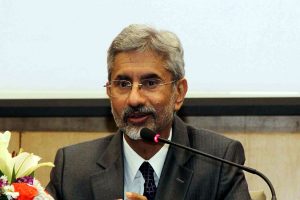Financial inclusion, in its narrowest connotation, is generally presumed as an endeavour that provides people, especially those in the hitherto unbanked region, a bank account. However, mere possession of a bank account cannot bring wonders. What is critical is the facilities endowed to individuals having a bank account. Direct Cash Transfers have considerably controlled the leakage of funds meant for targeted beneficiaries. Also, the poor can have access to insurance products with nominal premiums through their bank accounts. Also, saving habits could be inculcated, encouraged, and improved. Most importantly, financial inclusion will have its impact when credit facilities to the poor see a considerable improvement both in quantity and quality.
In one of my field visits to a tribal village in Andhra Pradesh, when I was interning with SERP (Society for Elimination of Rural Poverty) in 2010, I had spoken to a woman as part of my survey on the performance of Self-Help Groups. The woman said, “My husband worked in a factory but after his health deteriorated, he could not continue his work.” She expressed her helplessness in feeding her three children with the meagre wage she earned.
Advertisement
“Then I shared my problems with members of our SHG. As advised, I would apply for the loan to our SHG and though there were other members who required the money, my case was considered and we were chosen to receive the loan. We bought an autorickshaw for my husband and now we have come above the poverty line,” she added. “So, it was financial assistance that helped you?” I asked. She agreed and elaborated that most poor people irrespective of their livelihoods would need it to cross the poverty line.
The success story of the Pudupu Sangams or the Women SHGs in AP has been the role model behind the National Rural Livelihood Mission. Under this mission, nationwide efforts have been undertaken by the Ministry of Rural Development to build, manage and empower women Self-Help Groups. Though the women’s groups in AP have enough corpus to lend to their members, SHGs in other states depend on financial institutions like banks and NBFCs to finance their projects. Banks, especially public sector banks, have played a pivotal role in financing SHGs thus far. The crux is to financially assist SHG members who would invest money in income-generating assets that would provide them support to come out of poverty.
Apart from financing SHGs, banks have played a commendable role in funding the financial requirements of agriculture and allied activities. Designated as a priority sector for banks, there is a stipulated percentage of the Annual Net Bank Credit (ANBC) which is allotted to agriculture and allied activities. Notwithstanding the inability of farmers to repay the loans during bad seasons and the politics involved with farm loan waiver, there are thousands of success stories of farm loans.
The Pradhan Mantri Jan Dhan yojana, which earned the Government of India (Department of Financial Services) a Guinness world record for the maximum number of accounts opened in a week, has raised many debates on its effectiveness in poverty reduction. While some are of the opinion that the mere opening of an account does not contribute to the betterment of the poor, others feel that erstwhile financially illiterate people have become financially literate by not only familiarising themselves with the basic norms of banking but by also practicing it. Those in favour argue that saving habits have been inculcated and people have become aware of financial products like credit/loans for farmers etc. What is arguably one of the best benefits of the poor having a bank account, apart from availing credit, is its complementary assistance for the Direct Benefits transfer scheme to be successfully implemented, thereby avoiding the leakage of crores of rupees intended for farmers.
It is no secret that the poor are entrapped by money lenders with exorbitant rates of interest. People who depended on the outcome of annual crops and seasonal employment, while having pressing requirements like medical and food expenses and occasional needs for marriages and functions, were compelled to reach out to money lenders. The improvement in financing from banks has considerably reduced these needs.
There is still scope for improvement to bridge the gap between the poor and banks as far as availing credit is concerned. While the concern of poor people is the cumbersome documentation, banks have their own concerns about the creditworthiness of the poor. Most of the finance that banks provide is based on the business assumption that repayment will be made on time. To ensure that the poor do not default, it is important that the credit availed is used for income-generating assets. Thus, sincere inspection work on the part of bankers could help do away with documentation concerns by making the process of credit delivery to the poor more friendly.
Are we then to conclude that having a Bank account will transform a poor family’s fortunes overnight? It is often said that poverty eradication needs a multi-dimensional approach and that the poor have the ability and knowledge to come out of poverty. From the many testimonies of the poor, it is evident that financing is one of the most important tools for rural development.
It will of course require many other efforts like ensuring basic necessities – good roads, electrified houses, drinking water, etc. And while we acknowledge the rights of the poor to decide on how best they could develop, financial inclusion in its real sense will continue to be the one precious tool that is indispensable in the fight against poverty.
The writer is a freelance contributor and author. He is a former development professional and has served as a consultant in the Ministry of Rural Development, Government of India.











